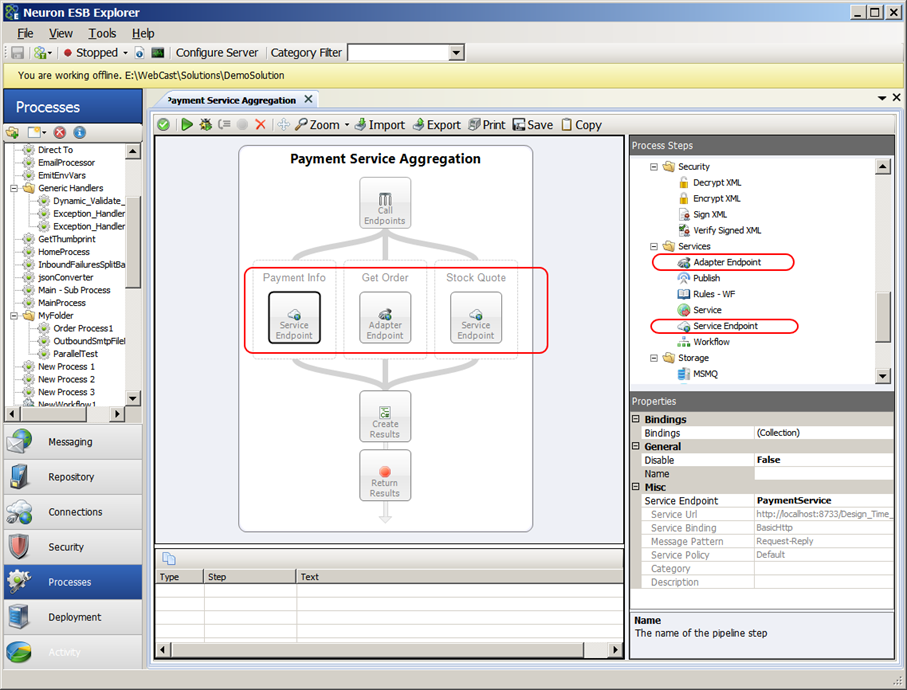Composition using Adapter and Service Endpoints
- Home
- Neuron ESB
- What's New
- Previous Releases
- Neuron ESB 3.5
- Composition using Adapter and Service Endpoints
As referenced earlier in this document, Neuron ESB 3.5 provides an Adapter and Service Endpoint Process Step that can be used in the Neuron ESB Business Process designer for creating real-time service composition solutions by aggregating existing services and application endpoints into more innovative business capabilities that can be accessed throughout an organization.
The advantage of the Adapter and Service Endpoint Process Steps is that they eliminate much of the overhead traditionally seen when bus or other messaging architectures are incorporated in service composition solutions where request/response type of message patterns are predominately employed.

The Adapter and Service Endpoint Process Steps allow users to call any configured Adapter Endpoint or Service Endpoint (i.e. Service Connector) directly, without the need to publish the message to a Topic. This works with either Request/Response or Multicast/Datagram types of messaging patterns.
Using these new process steps does not preclude the ability for users to dynamically specify which service to call at runtime. For example, the Service Endpoint Process Step allows users to dynamically set the name of the Service Connector to call at runtime by simply setting the Service property of the ESB Message Header, using either the Set Property Process Step or any of the language Process Steps such as the C# Process Step ex:
context.Data.Header.Service = "Payment Service";